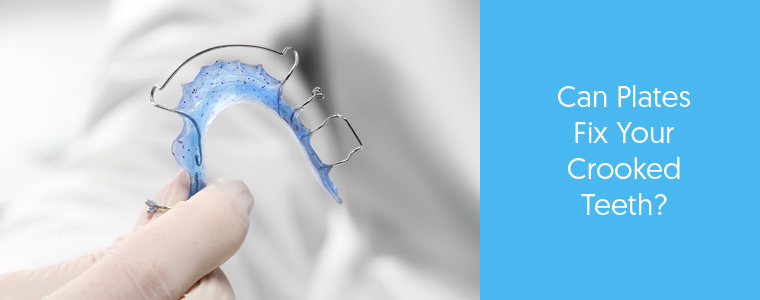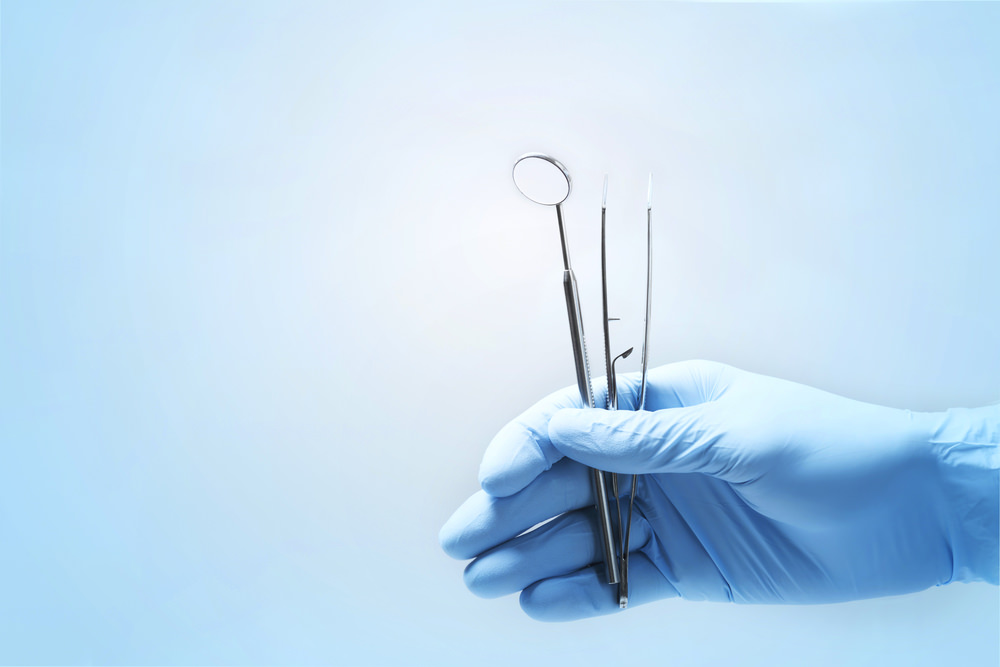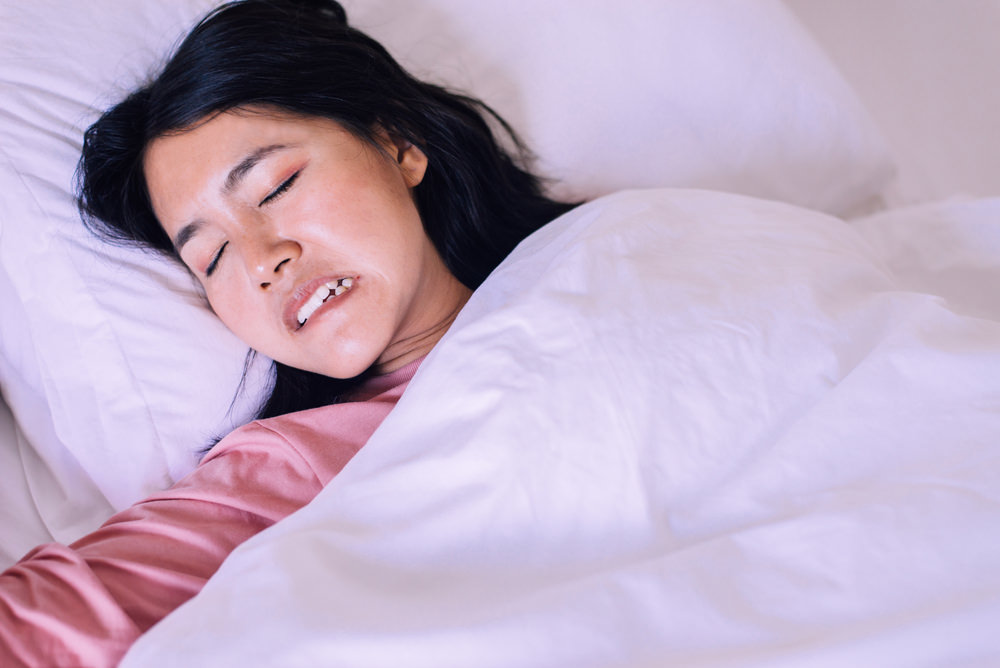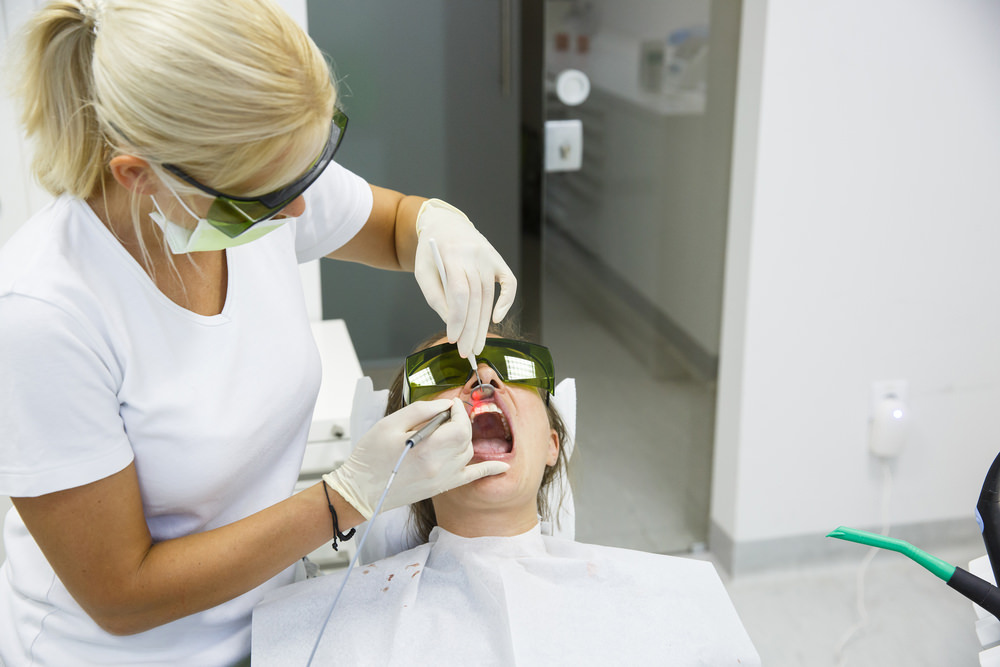Fixing Crooked Teeth with Plates
These days there are cheaper alternatives available for both you and your children to have your teeth straightened.
One of these choices being the simple option of dental plates.
Apart from being less costly than fixed braces, perhaps the biggest advantage to plates is that they are a removable appliance.
This makes them easily taken out of your mouth for eating and cleaning.
They can also be beneficial to children who have not yet obtained all of their adult teeth.
Unfortunately, the use of plates is limited to less serious teething issues – although they are an effective appliance, they can only provide limited corrections.
So how do you know if they are the right option for you or your child?
Can You Straighten Teeth Without Braces?
If you are considering straightening your crooked teeth, you are not limited to braces – there are a lot of different orthodontic treatments available today.
One such different method is the option of an appliance that can be removed, otherwise known as plates.

A young girl using a dental plate
A plate is a solid, plastic appliance that fits around the top or bottom row of your teeth, or occasionally both.
With the use of wires and springs, it pushes your teeth back into their correct position or helps to hold them in place.
Unlike braces, your orthodontist will not bond the wires or springs to your teeth, so you can remove the plate at any time.
Normally worn by younger children to fix less significant crowding or bite problems within the mouth, plates will correct these misaligned teeth and reduce or prevent the number of cosmetic rectifications they may need when older.
However, they are often also recommended to adults as the cheaper alternative to straighten crooked teeth.
How Effective are Plates?
As an adult, the most significant advantage is that plates can be removed at any time, so they do not place any restrictions on your diet or lifestyle.
However, you must make a commitment to wearing them as required – this is up to 22-24 hours per day – to achieve the necessary results.
Being the less costly option, they are often recommended by an orthodontist.
It must be noted, though, that plates can only provide limited corrections such as teeth crowding or bite problems.
Therefore, at times braces are still the more effective option for any major issues – the best person to advise you on what is the most effective option for you is your orthodontist.
Dental Plates and Young Children
In young children, plates are very effective if your child has lost their baby teeth early if they are having problems with misaligned teeth, smile crowding or bite problems.
The plates might still be used as the first stage of a two-phase treatment, but this may reduce the number of cosmetic rectifications needed as they grow older, so it’s still a worthwhile option.
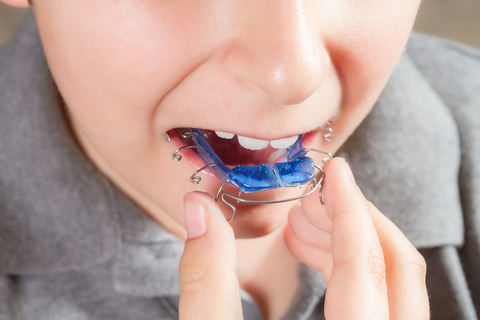
A boy with a dental plate
For example, if the plate is used whilst your child still has some baby teeth, this will help close gaps and help keep a suitable space for their adult teeth to grow into.
But generally, they will require another treatment with braces as the second stage of treatment once all their adult teeth have come through – normally when they are a teenager.
The braces ensure that all their teeth are aligned and create the perfect bite.
But the wearing of the plates whilst younger has helped put a stop to the need for more extreme tooth movements whilst in their teenage years.
Please also note that, as the plate is easily removable, it is also easily damaged or lost.
Your child will be responsible for wearing, cleaning and not losing the plate – not always an easy task to assign to them!
How Long do You have to Wear Plates for?
This will vary depending on the amount of correction that you require, and your orthodontist will give you the best answer to this question.
However, most treatments are usually completed within three to six months.
During this time, it is important to wear the plate as close to 24 hours a day as possible – only take it out when eating, cleaning your teeth and the plate, playing contact sports and swimming.
Maintaining good oral hygiene and attending regular orthodontic appointments will also be necessary.
After this you will still have to wear a retainer at night.
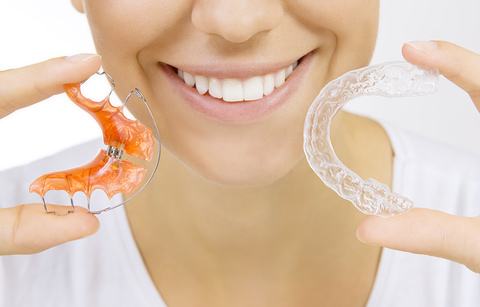
Two forms of a retainer
Do You Have to Wear a Retainer for Life?
Yes – but not on a regular basis.
After the initial phase of your treatment has been completed and your orthodontist is happy with the results, you will then be asked to wear a retainer.
This is to ensure that your teeth are held in their new position. At first, you will be asked to wear the retainer at night time only.
Generally, it will be recommended that you do so until 6 – 12 months of treatment has been reached.
For example, if you wore your plate daily for 3 months, you may be asked to wear the retainer at night time for 9 months.
After up to 12 months of continuous retainer wear, your orthodontist will then recommend that you wear your retainer 3 – 5 times a week – yes, for life.
This is recommended to ensure that your teeth remain straightened – essentially speaking, it takes 9 – 12 months to ensure the teeth remain stable and keep them from moving out of their new position, hence the 12 months of daily retainer wear.
Then, as you grow older, teeth may shift, but this can be prevented with the continued use of retainers to ensure they remain straight.
Can You Wear a Plate or Retainer Without having Worn Braces?
Yes – they are simply a different alternative to braces.
However, they are only able to provide limited corrections to teeth, unlike braces which have the ability to fix both minor and major issues.
In some cases, braces are still the better option as they generally fix all problems far more effectively and straighten all types of crooked teeth – consult your orthodontist, and based on your problem, they will advise you if a plate or retainer will work for you.
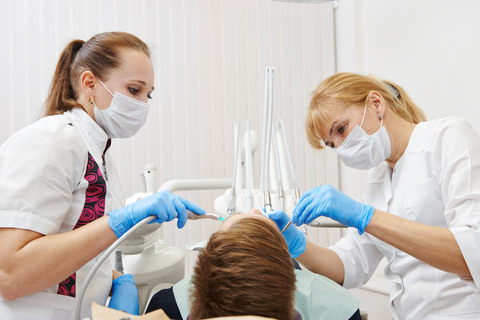
An orthodontist and dental assistant inspecting a patients mouth
How Do You Get a Plate – (Dentist or Only Orthodontist)?
The best person to give you advice on, and fit a plate, is an orthodontist.
Orthodontists and dentists both help you improve your oral health, but in different ways.
Dentistry is a wider medical specialty, involving both the teeth, jaw, gums and nerves.
Orthodontics, on the other hand, is a specialty within the dental industry that involves the straightening of crooked teeth.
Orthodontists have over 4000 hours of specialist training, so you can rest assured they have the knowledge required to examine your case and explain both the advantages and disadvantages to you.
No referral is required from a dentist to visit an orthodontist, so it is easy to make a booking.
What is the Process of Making One Fit?
After making the decision with your orthodontist to have a plate, you will follow the steps below
#1 Records – Models of your teeth will be taken, so that the plate can be fabricated to fit your mouth and teeth correctly. At the same time, x-rays and photographs are usually taken of your teeth.
#2 Fitting the plate – Usually, the plate is fitted within 7 – 10 days after the above procedure is performed.
Whilst being fitted, the plate is tested, and any necessary adjustments are made to ensure it fits both properly and comfortably. Any issues with the construction of the plate i.e. the wires, springs or screws, are now also corrected.
Please note that you will notice a strange taste in your mouth whilst the plate is fitted, but this will disappear in a few hours. For the next few days you will feel some tenderness, but this will fade.
The plate will generally tend to have some effect on your speech, but this too will only take a few days until you get used to the feeling and learn how to speak normally with the plate in your mouth.
#3 Follow-up appointments – You will have regular visits with the orthodontist to check the fit, comfort and cleanliness of both your plate and your teeth.
Your orthodontist will also check on the development of your tooth movement to ensure all is going as planned.
#4 Retainers – After your desired result has been achieved, there will be a period of time where retainers are worn on a nightly basis to ensure that the teeth stay stable in their new position.
Once this time has passed, the retainers should still be worn 3 – 5 times per week.
Conclusion
A less costly procedure to straightening crooked teeth than braces, plates are definitely something to take into consideration, especially if your children are having issues with their teeth at a young age.
While big advantages include the fact that they are removable, comfortable and can straighten your teeth in a short period of time, they do only provide limited corrections.
This means they may only be used to fix minor issues or as a part one of a two-phase treatment, where braces may still be required afterwards.
Consult an orthodontist to see what the plate can do to help your situation as you may be surprised with the outcome – just be careful not to lose it!
By Dr. V
Created at May 02, 2019, Updated at January 25, 2025


